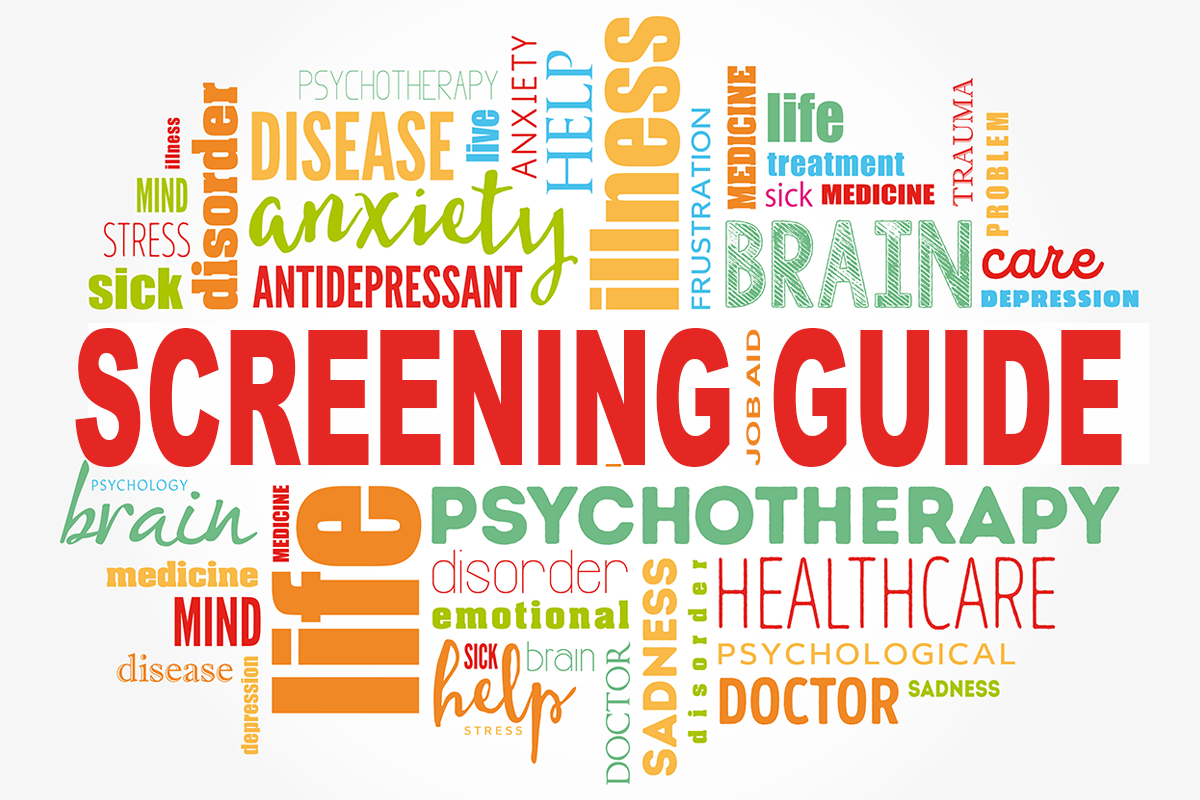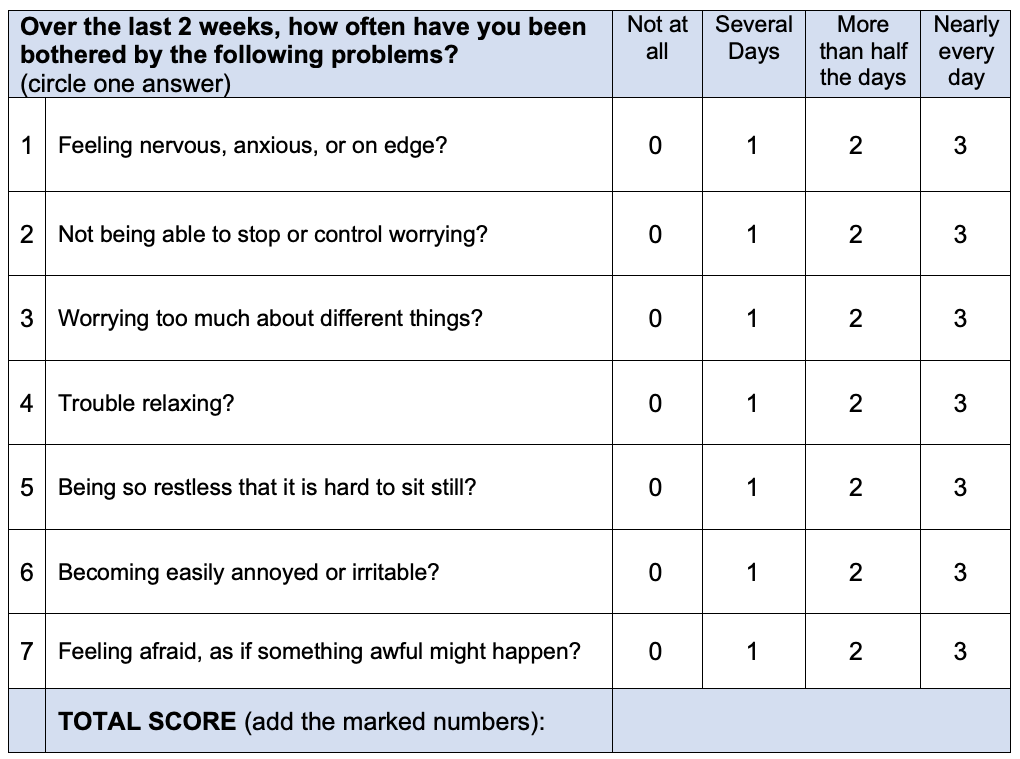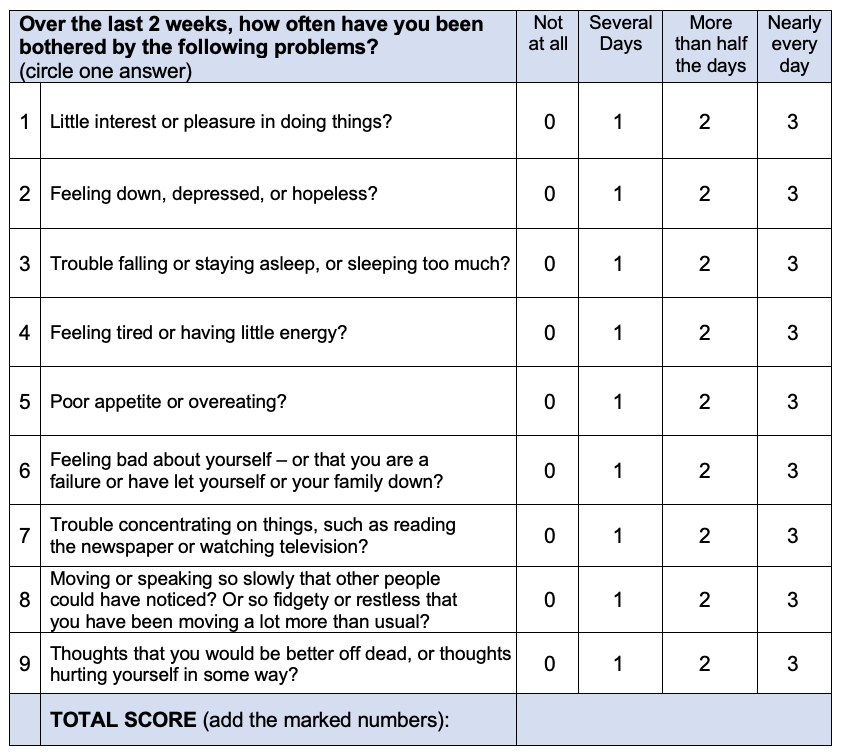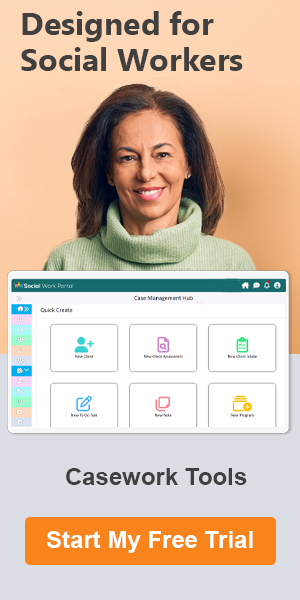What Tools Can You Use to Test for Anxiety or Depression?
Top Depression and Anxiety Questionnaire (PHQ & GAD Assessments) for 2024
What tools do social workers, clinicians, primary care providers, and other healthcare professionals use to screen for depression and anxiety? The Patient Health Questionnaire (2, 4, and 9) and the Generalized Anxiety Disorder assessment (2 and 7) are among the most popular of the depression and anxiety screening tools.
In this depression and anxiety screening guide, we’ll go through these family of assessments as well as tell you what other tools are out there for depression anxiety screening.

Patient Health Questionnaire for Depression & Anxiety
Feeling nervous, anxious or on edge is something most people can relate to from time to time. The same is true for feeling down or sad. These feelings often happen due to external circumstances, such as getting bad news or being worried about a presentation at school or work.
But, when these feelings of anxiety and depression don’t go away or when they begin to interfere with daily activities, it may be necessary for an individual to undergo a depression and anxiety screening.
Questions about depression and anxiety, such as “How often do you have trouble relaxing” or “How many times in the last two weeks have you felt down, depressed, or hopeless,” can reveal issues with mental health that should be addressed.
Would you like to share feedback on the patient health questionnaire for depression and anxiety used by your organization? Do you have depression anxiety screening techniques that have worked best for you that you’ll like to share with other health professionals? If so, contact the Social Work Portal Team.
See Also: How to Use the Generalized Anxiety Disorder 2 Assessment
Table of Contents: Depression & Anxiety Questions
Keep on scrolling down this page to read each section or click any link below to go directly to that section.
- How Do You Test for Anxiety or Depression?
- How Do You Know Whether to Give a Depression or Anxiety Test?
- What Are the Most Popular Depression & Anxiety Screening Tools?
- GAD-7 Anxiety Screening Questions
- PHQ-9 Depression Screening Questions
- What Is One Questionnaire for Depression and Anxiety?
- What Other Anxiety and Depression Assessment Options Are There?
- Conclusion | Best Depression and Anxiety Questionnaire
- FAQ | Depression & Anxiety Questions
Don’t Miss: Everything You Need to Know: What Are the GAD & PHQ Mental Health Questionnaires?
Would you like to share feedback on the PHQ 9 anxiety techniques used by your organization? Is there an anxiety assessment tools pdf that has provided great value to you that we can include in this guide for other health practitioners to leverage? If so, contact the Social Work Portal Team.
How Do You Test for Anxiety or Depression?
There are a few different ways that healthcare and mental health providers can test for anxiety or depression in patients. A common way to begin is through a quick depression or anxiety screening tool.
This could be an online test for anxiety and depression, or a depression or anxiety test given offline on paper. A primary care physician, social worker, or other healthcare professionals can also give a depression or anxiety questionnaire verbally, asking a few questions directly to the patient.
The depression or anxiety screening questionnaire is designed to detect symptoms of one of these mental health conditions.
After the anxiety and depression questionnaire for screening is reviewed, if warranted, the clinician may have some lab tests run to rule out physical reasons for the symptoms.
More extensive assessment via a one-on-one session may also be used to complete a diagnosis, depending on the results from the level of anxiety questionnaire or level of depression questionnaire.
Related: Guide to PHQ2 Depression Screen & How to Score It
How Do You Know Whether to Give a Depression or Anxiety Test?
Both depression and anxiety are mood disorders. Because of their prevalence in the population, many organizations recommend that everyone undergo a depression and anxiety questionnaire screening annually.
For example, the American Psychological Association recommends that all adults, even those that show no symptoms, get an annual depression screening. The American Academy of Pediatrics recommends depression screenings annually for all children and adolescents (10 and up).
So, in many cases, both depression and anxiety survey questions will be given to identify either issue. These two mental health disorders do however have different symptoms which can help you pinpoint whether to give a person a questionnaire for anxiety or depression.
- Depression: When a person has depression, they can have ongoing feelings of sadness and hopelessness. They may also have reduced energy. Someone with severe depression can be in danger of suicide or self-harm and can lose interest in activities they used to enjoy.
- Anxiety: When a person has anxiety, it can cause feelings of excessive worry or dread and nervousness. They may stop doing things because they are afraid, and can’t relax or enjoy things.
Can someone have both depression and anxiety?
Yes, a person can have both disorders, and it’s not uncommon for them to exist together. Both conditions may be treated using psychotherapy, medication, and lifestyle changes.
Popular Article: Patient Health Questionnaire-9 | Guide
Do you have any questions about GAD 7 or PHQ 9 anxiety depression screening or where to find an anxiety assessment tools PDF? If so, contact the Social Work Portal Team.
What Are the Most Popular Depression & Anxiety Screening Tools?
In the 1990s a research team (Robert Spitzer, Janet Williams, Kurt Kroenke, et al.) worked with Pfizer to develop two screening tools that have since become quite popular due to their proven reliability and efficacy.
The PHQ-9 depression questionnaire and GAD-7 anxiety questionnaire are short surveys that help clinicians quickly assess an individual for either depression or anxiety.
The PHQ-9 (Patient Health Questionnaire-9) consists of nine depression questions. The GAD-7 (Generalized Anxiety Disorder-7) has seven anxiety questions. Both tests detect the presence of symptoms as well as the level of severity of either depression or anxiety.
A big benefit of these screening tools is that an individual can self-administer the depression and anxiety survey questions, so the clinician only needs to interpret the results. Both mental disorders often go undiagnosed and untreated, so having a quick and easy anxiety and depression questionnaire helps address this problem.
Both the PHQ-9 and GAD-7 spawned shorter abbreviated versions called the PHQ-2 and GAD-2. As you most likely have guessed, each of these has either two depression questions or two anxiety questions, respectively.
These two questions about depression and anxiety create an even more rapid assessment that can indicate if the longer test should be administered. The questions are taken from full PHQ-9 or GAD-7 depression or anxiety test.
In the next two sections, we’ll go through in more detail the GAD 7 and PHQ 9 questionnaire for anxiety and the questionnaire for depression.
Read More: Understanding the GAD 7 Scale for Anxiety Screening
Are you looking for free social worker templates & forms? You can download all our free social worker tools here.
GAD-7 Anxiety Screening Questions
The GAD-7 level of anxiety questionnaire includes seven symptoms of anxiety. Each symptom is considered as the anxiety screening questions.
For each symptom/question, the individual will indicate, based on four choices, how often they’ve experienced that symptom in the last 2 weeks. The four answer options to the anxiety screening questionnaire are given a score between 0 and 3.

GAD-7 – Anxiety Screening Tool
Scoring for the anxiety survey questions is as follows:
0-4: None to Minimal Anxiety
5-9: Mild Anxiety
10-14: Moderate Anxiety
15-21: Severe Anxiety
Related: What Is GAD? How to Identify It with Anxiety Disorder Tests
Are you looking for an online test for anxiety and depression? Do you have any questions about the patient health questionnaire for depression and anxiety? Click here to contact the Social Work Portal Team.
PHQ-9 Depression Screening Questions
The PHQ-9 screening for depressive disorder includes nine symptoms of depression. Each symptom is listed as a question in the screening questionnaire.
Just like the GAD-7 anxiety questionnaire, the individual will indicate how often they’ve experienced that symptom in the last 2 weeks. The four answer options for this depression screening can score between 0 and 3.

PHQ-9 – Depression Screening Tool
Scoring for the depression-related questions is as follows:
0-4: None to Minimal Depression
5-9: Mild Depression
10-14: Moderate Depression
15-19: Moderately Severe Depression
20-27: Severe Depression
Don’t Miss: What You Need to Know About the HIPAA Form
Do you have any questions about either depression or anxiety questionnaire described above? Click here to contact the Social Work Portal Team.
What Is One Questionnaire for Depression and Anxiety?
There is a questionnaire for depression and anxiety combined. This is the PHQ-4. It’s a rapid anxiety and depression assessment that includes just the first two questions from both the GAD-7 and PHQ-9.
This combined anxiety and depression questionnaire can help indicate whether an individual should be given a more detailed assessment for depression, anxiety, or both.
Popular Article: Popular Social Work Case Notes Formats
What Other Anxiety and Depression Assessment Options Are There?
While the PHQ and GAD anxiety screening tool options described above are used widely and are very popular, there are some other tests for anxiety or depression out there that you may want to consider.
Here are some other depression and anxiety questionnaire options:
- Depression Anxiety Stress Scales (DASS)
- Hamilton Anxiety Rating Scale (HAM-A)
- Beck Depression Inventory (BDI)
- Depression Scale for Children (DSC)
- Spence Children’s Anxiety Scale (SCAS)
See Also: Key Overview of Best Social Worker Forms
Conclusion | Best Depression and Anxiety Questionnaire
A depression or anxiety test is a common screening given to many adults and adolescents. Many reliable questionnaires can be self-administered or given quickly to aid in the diagnosis of these conditions.
Depression and anxiety questions in the PHQ and GAD assessments are created in such as way as to identify not only whether there are signs of either depression or anxiety, but to also indicate the severity.
Anyone that wants to work in healthcare or mental health will need to become very familiar with options to test for anxiety and depression. The ones we’ve described above, are an excellent place to start.
Don’t Miss: Social Work Theories Cheat Sheet for All Social Workers
FAQ | Depression & Anxiety Questions
What is the best anxiety questionnaire?
One of the most popular questionnaires for anxiety is the Generalized Anxiety Disorder-7 (GAD-7) developed by Pfizer and its research partners. This anxiety screening tool consists of seven questions and indicates the potential presence and severity level of anxiety.
How do you test for anxiety?
Most anxiety screening questionnaire tools will provide a list of questions related to symptoms of anxiety, such as feeling nervous, anxious, or on edge. The respondent will then indicate how often they’ve experienced the symptom within a certain timeframe, such as the last two weeks.
What is the GAD-7 screening tool?
The GAD-7 level of anxiety questionnaire includes seven symptoms of anxiety. For each symptom/question, the individual will indicate based on four choices how often they’ve experienced that symptom in the last 2 weeks. The four answer options to the anxiety screening questionnaire are given a score between 0 and 3.
How do you tell if it is depression or anxiety?
The PHQ-4 assessment is a rapid anxiety and depression questionnaire. It includes 2 questions related to anxiety and 2 questions related to depression. This test can help determine if a person has signs of one or both conditions.
•Depression: When a person has depression, they can have ongoing feelings of sadness and hopelessness.
•Anxiety: When a person has anxiety, it can cause feelings of excessive worry or dread and nervousness.
Note: Content on Social Works socialworkportal.com website is copyrighted.
Social Work Portal Disclaimer:Social Work Portal is not a social work agency and we do not refer social workers. This web site is provided for educational and informational purposes only and does not constitute providing medical advice or professional services. The information provided should not be used for diagnosing or treating a health problem or disease, and those seeking personal medical advice should consult with ... Read our full disclaimer here: Social Work Portal Disclaimer.
Image sources: Stock.adobe.com









